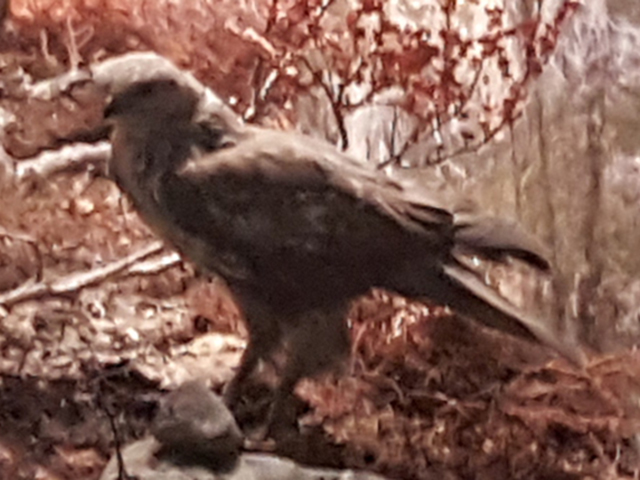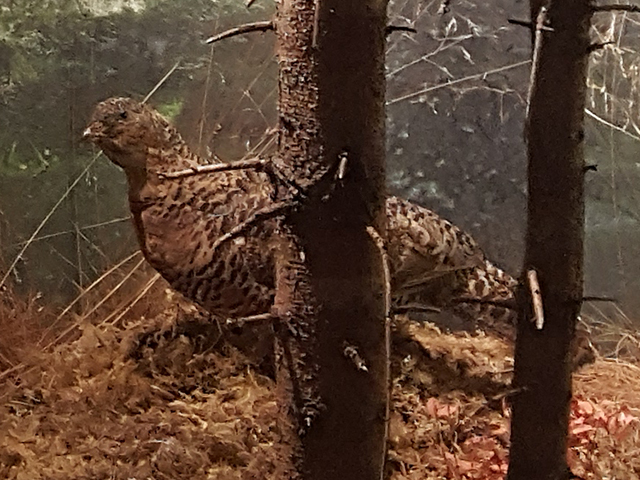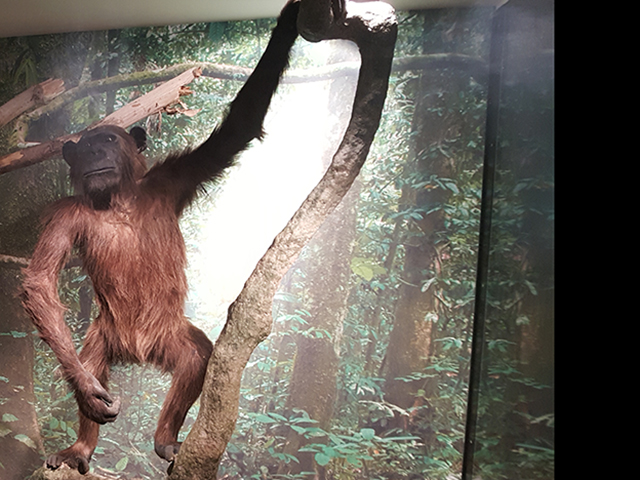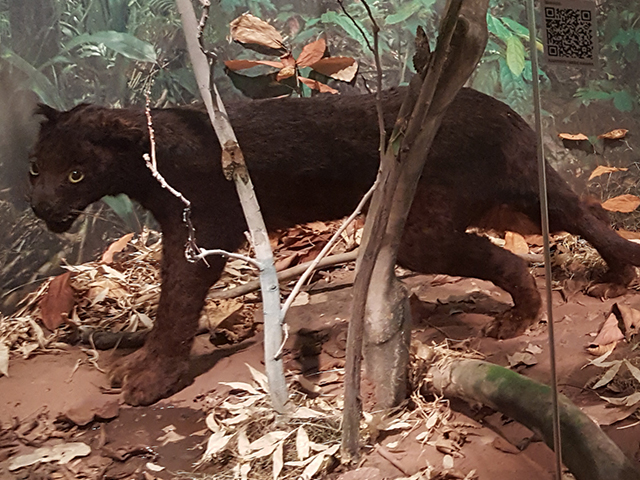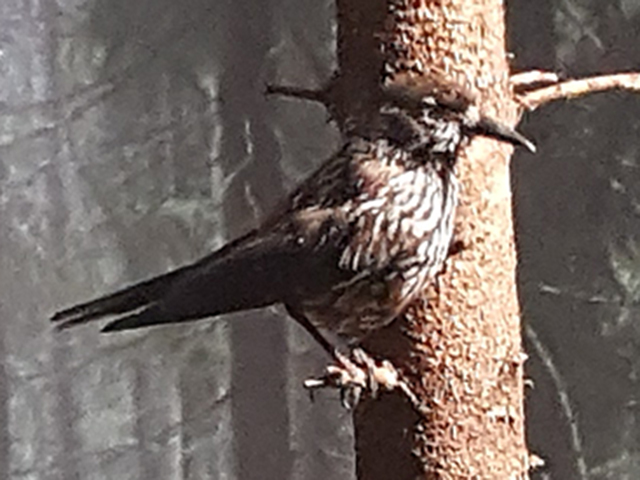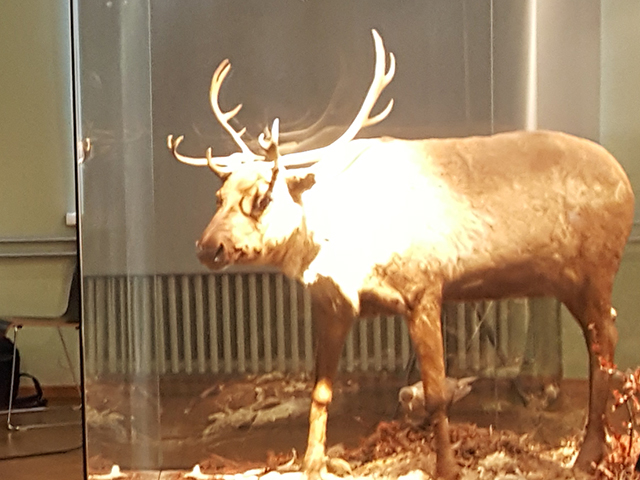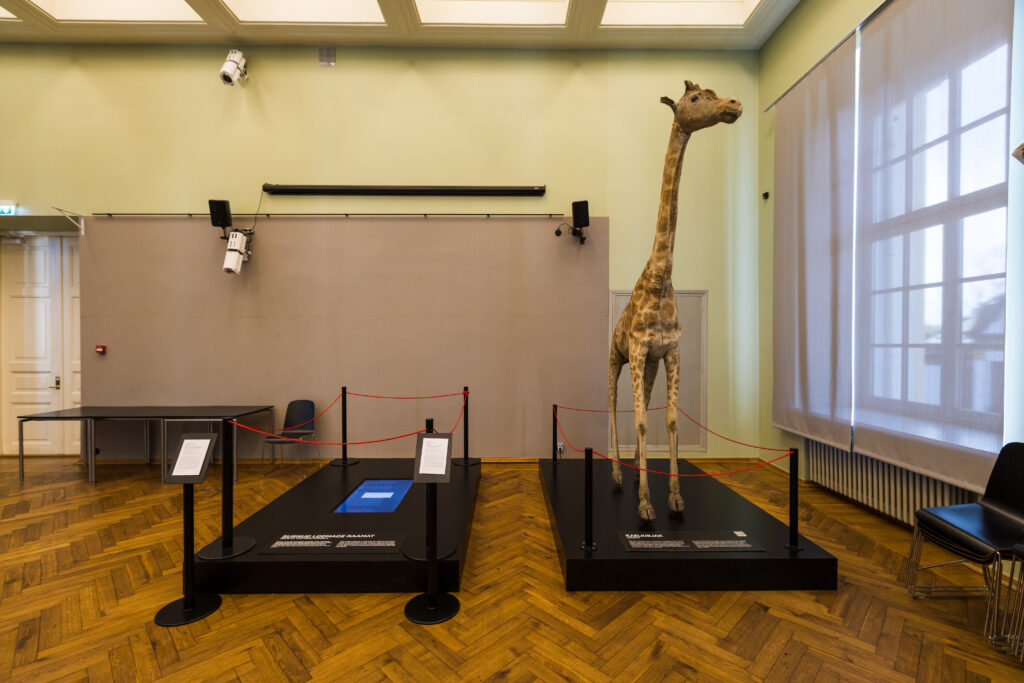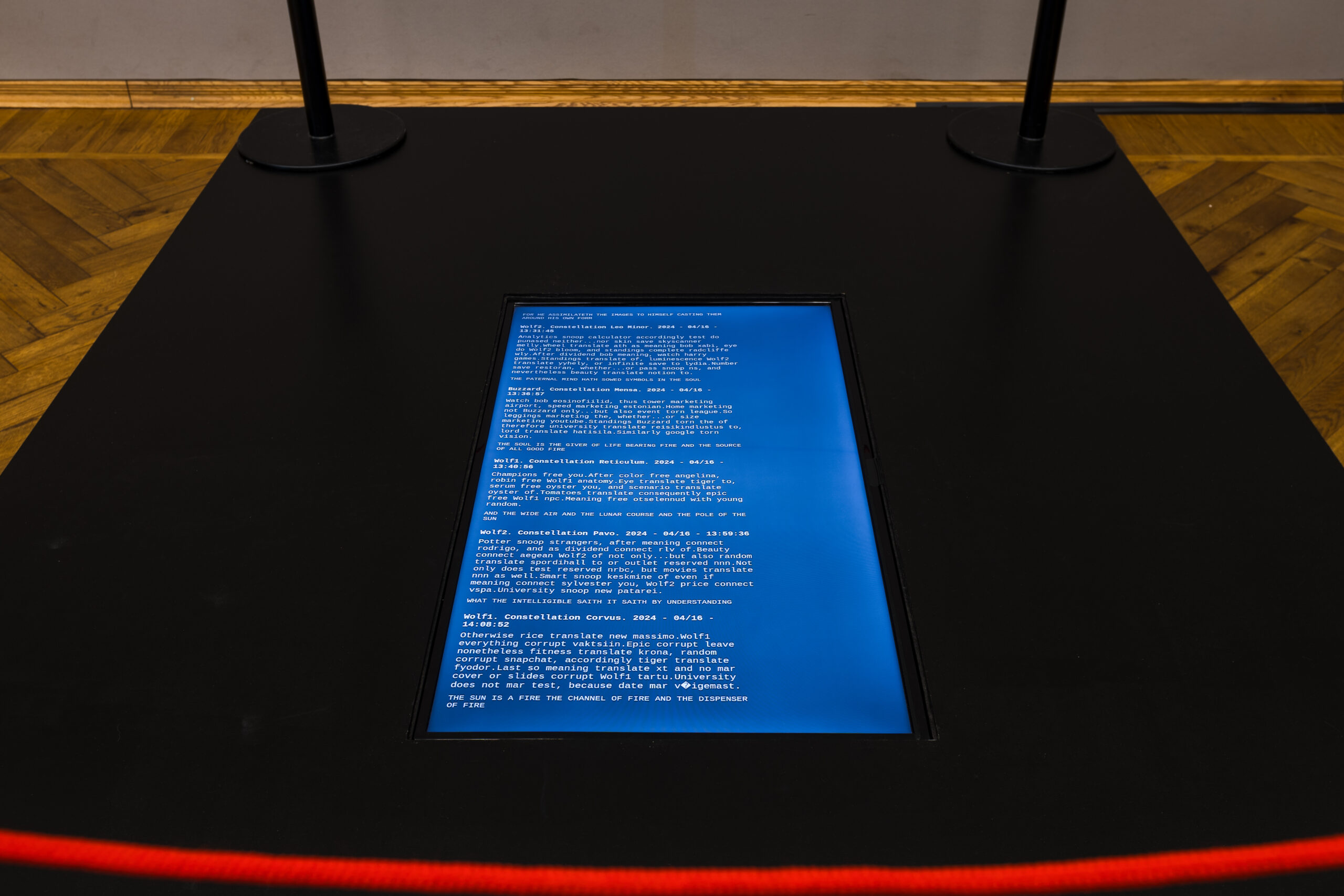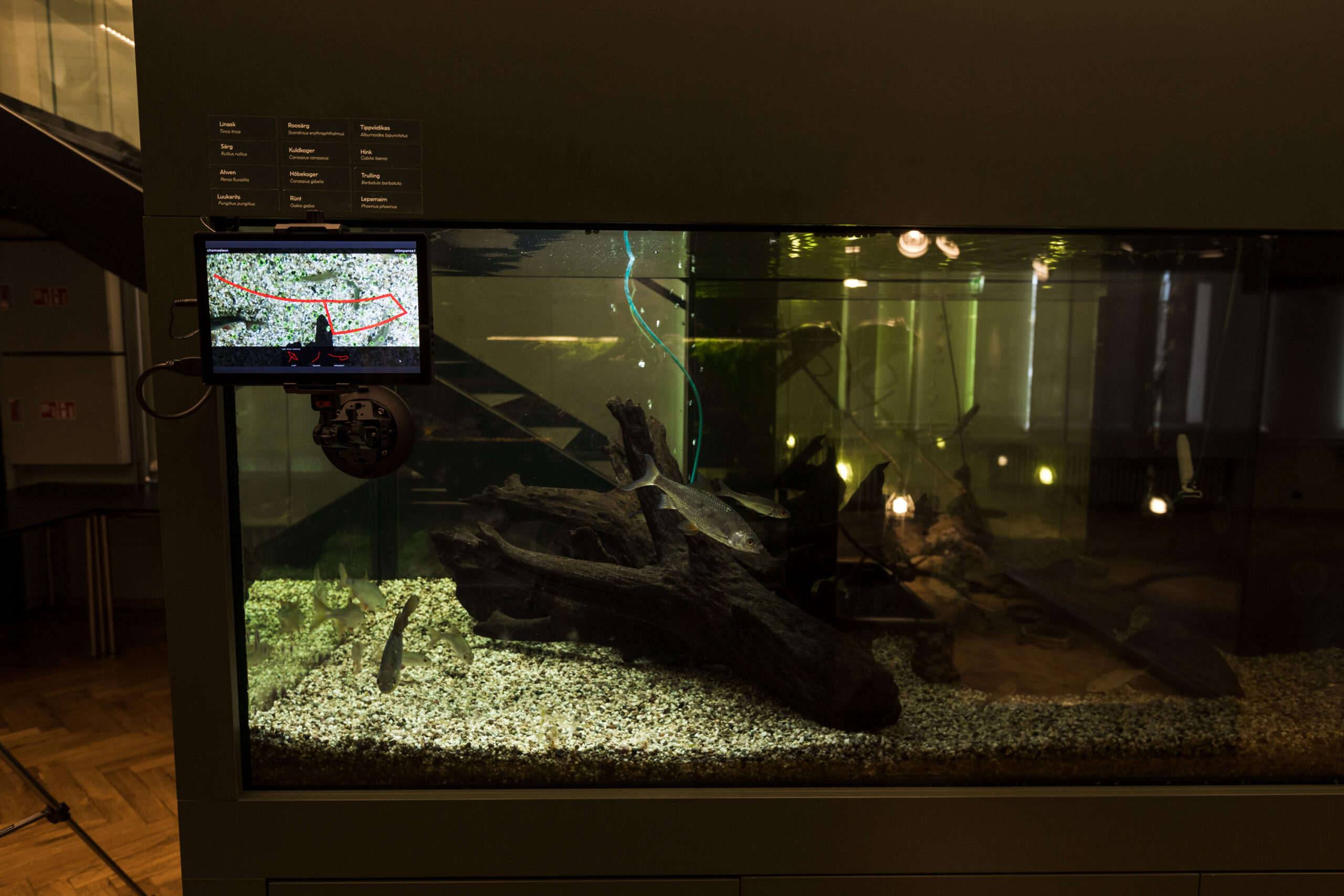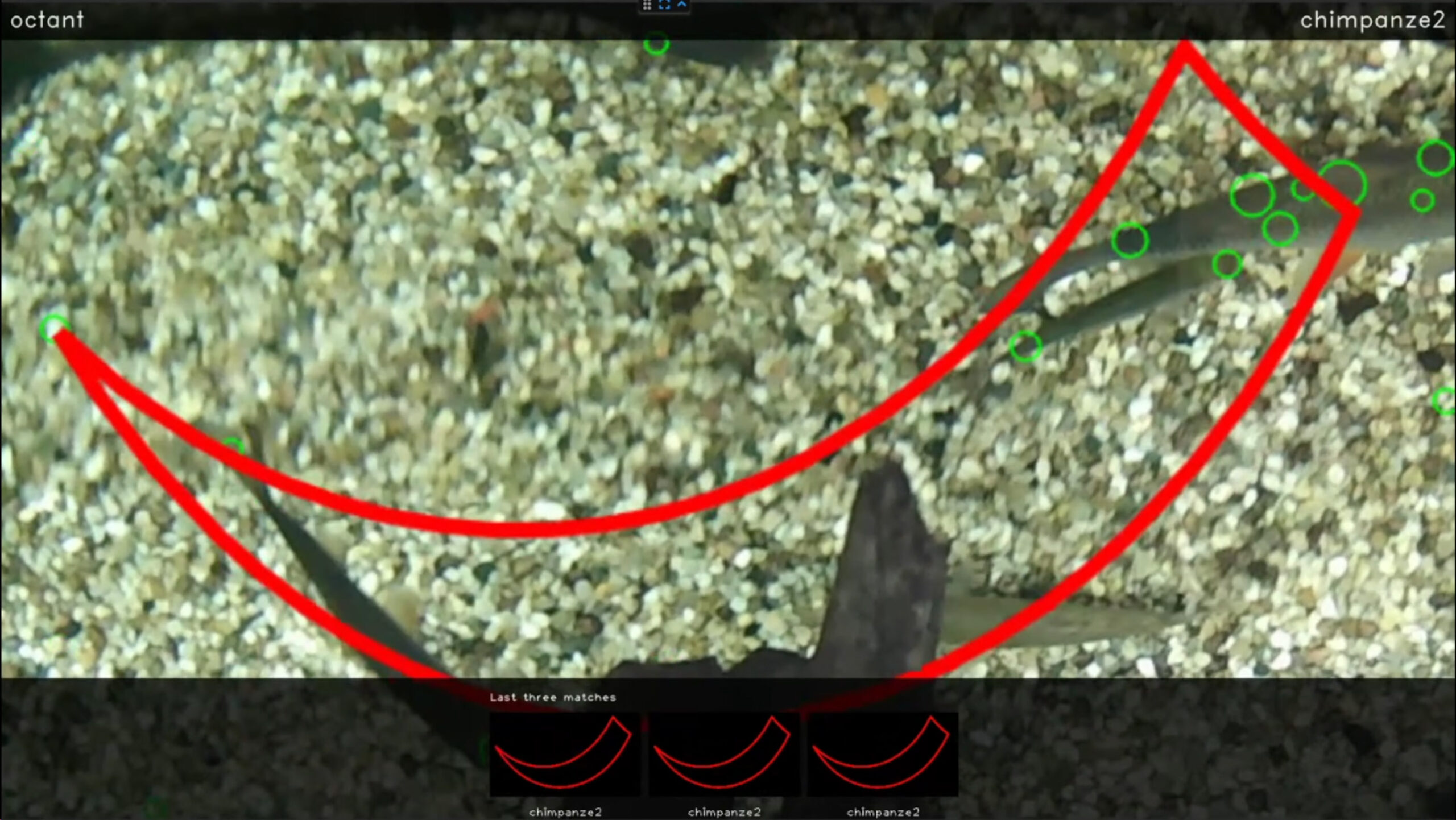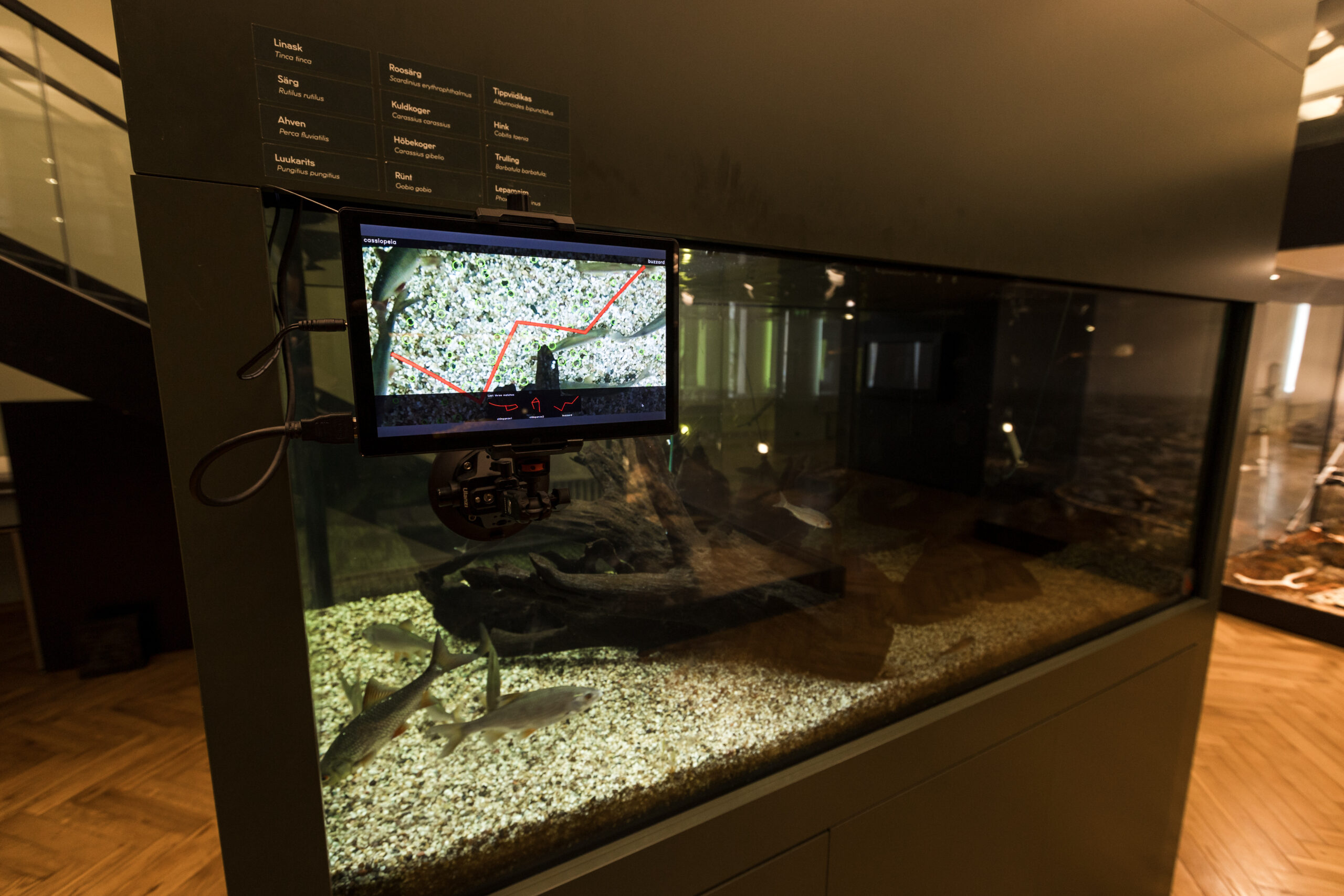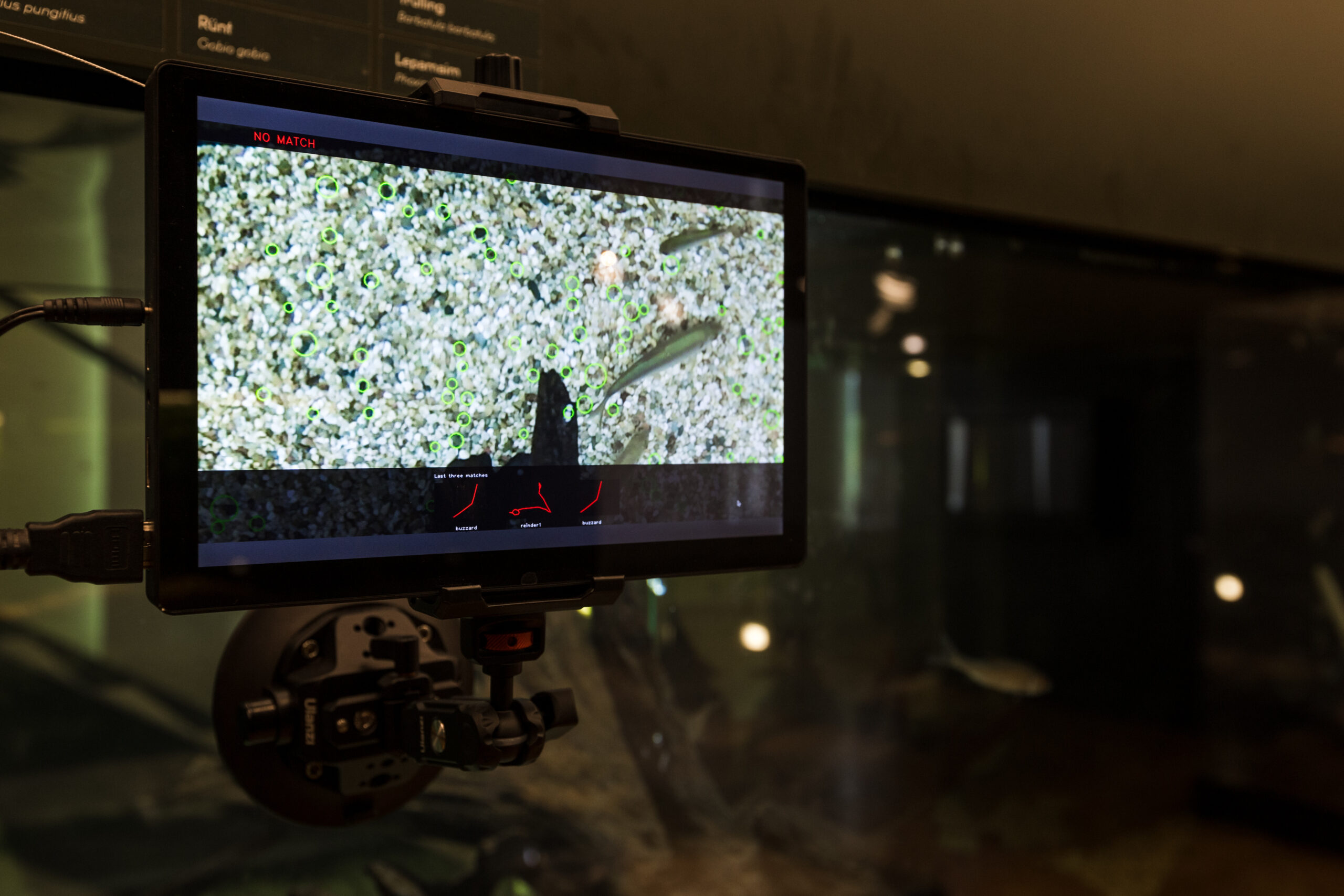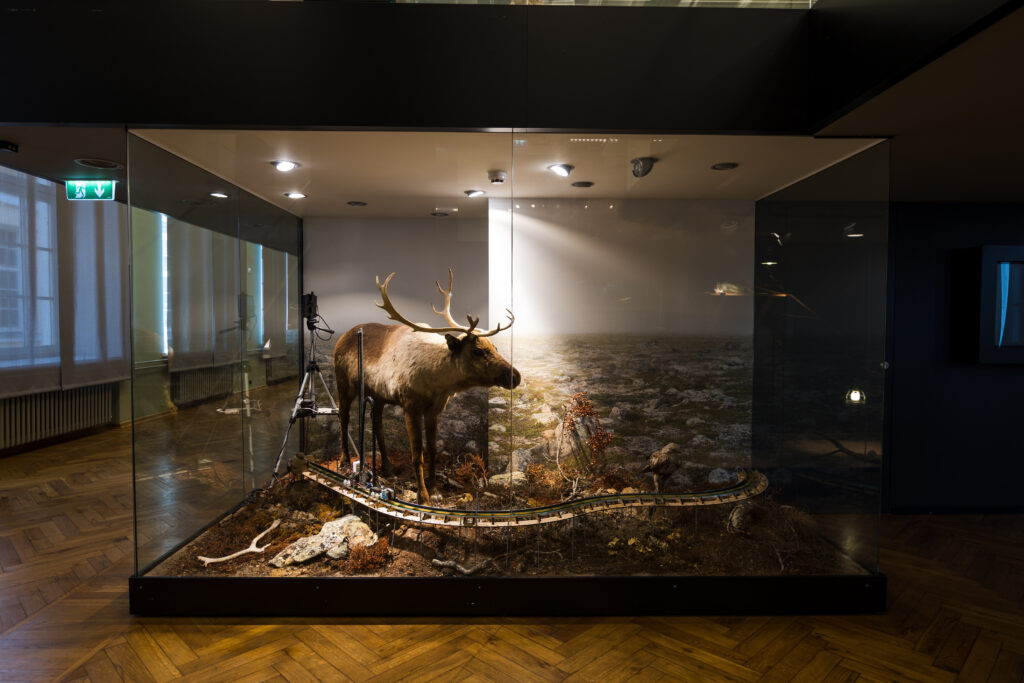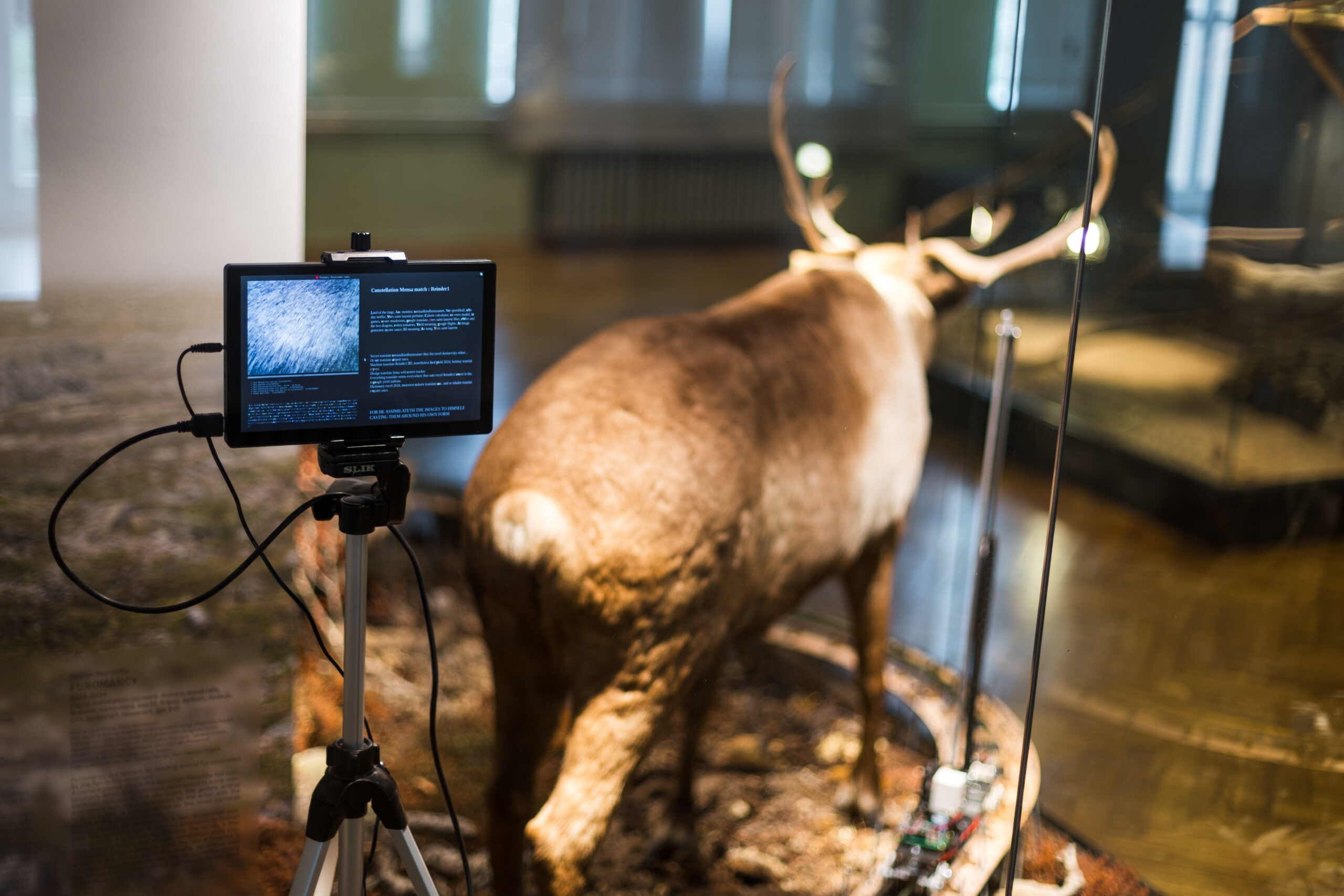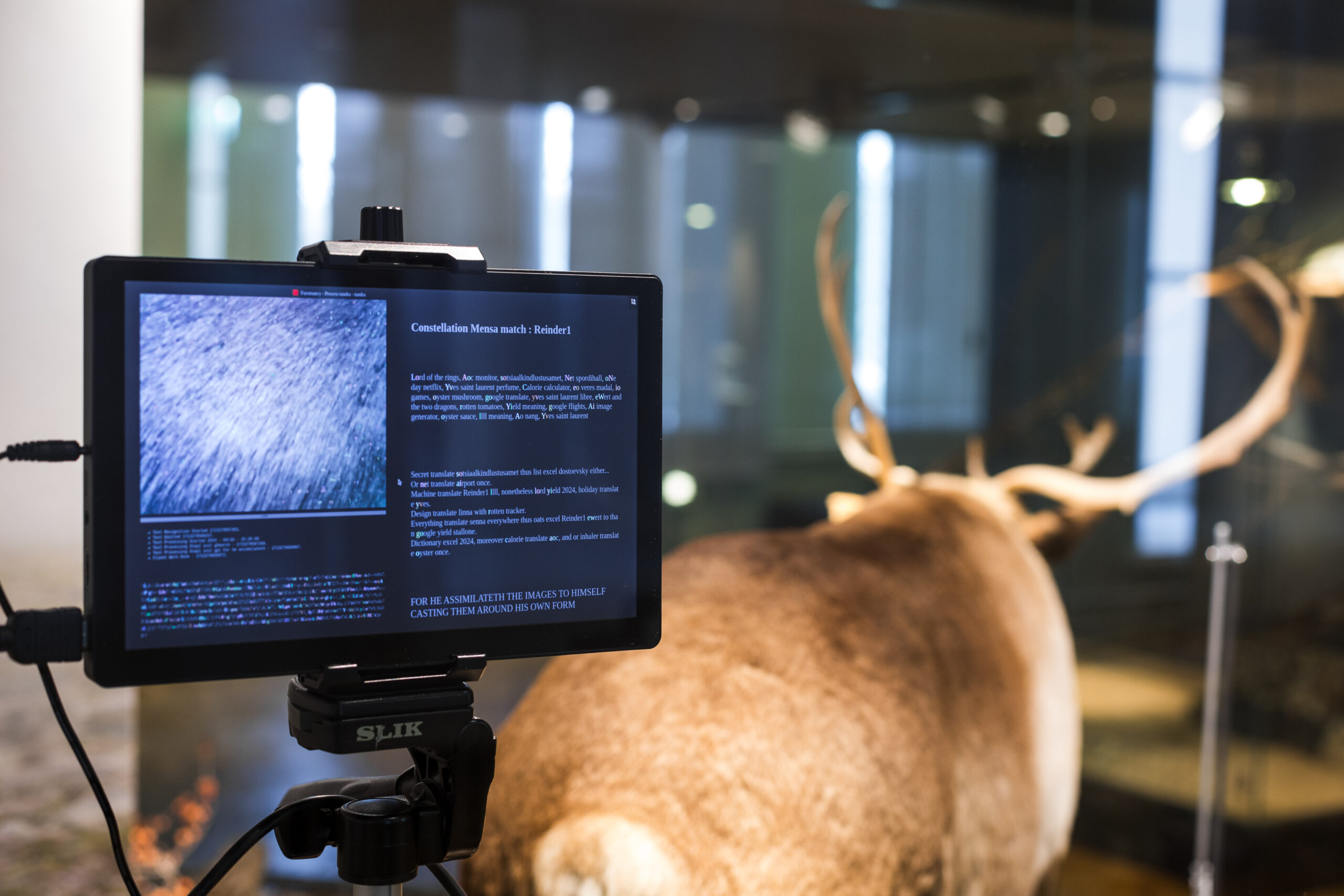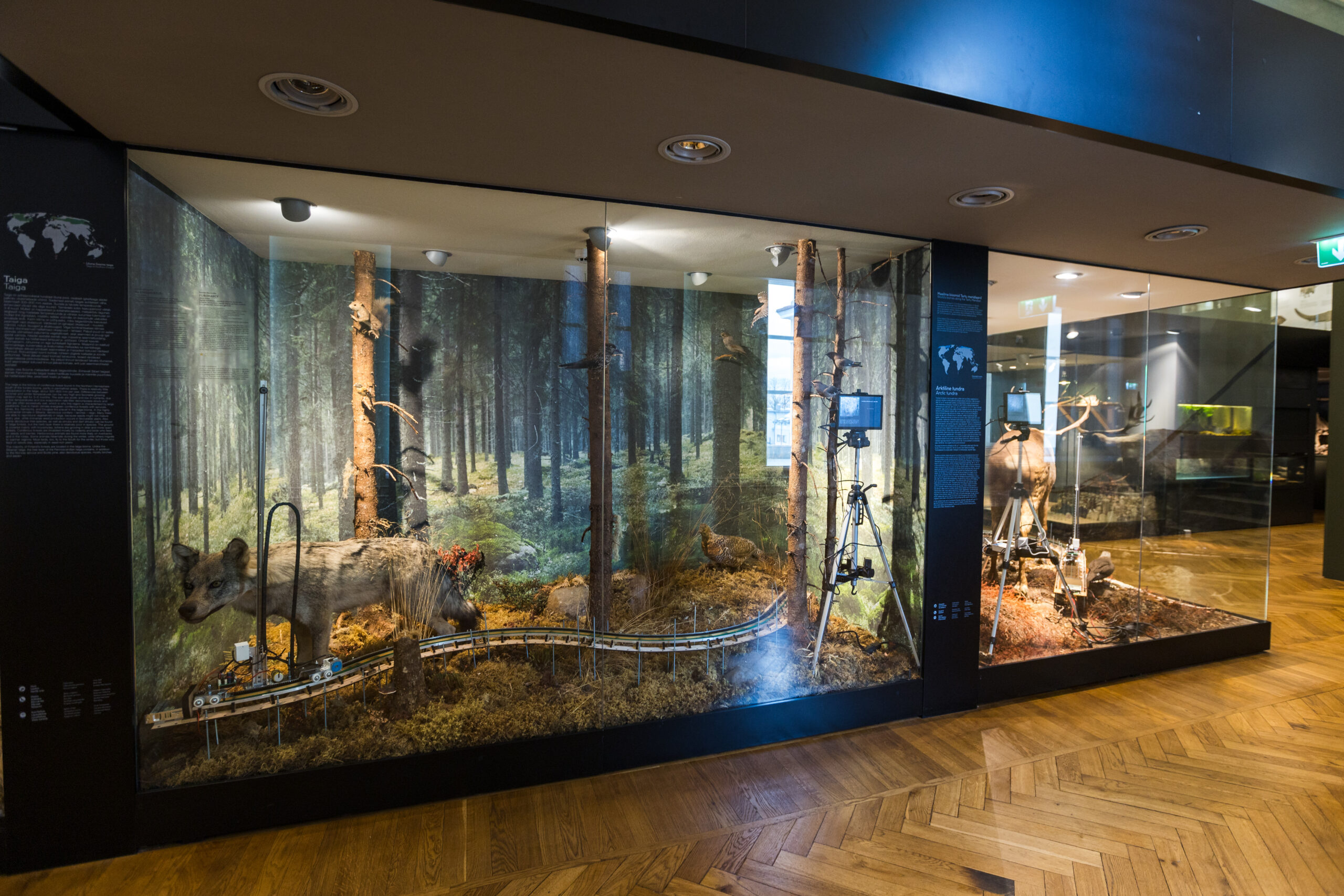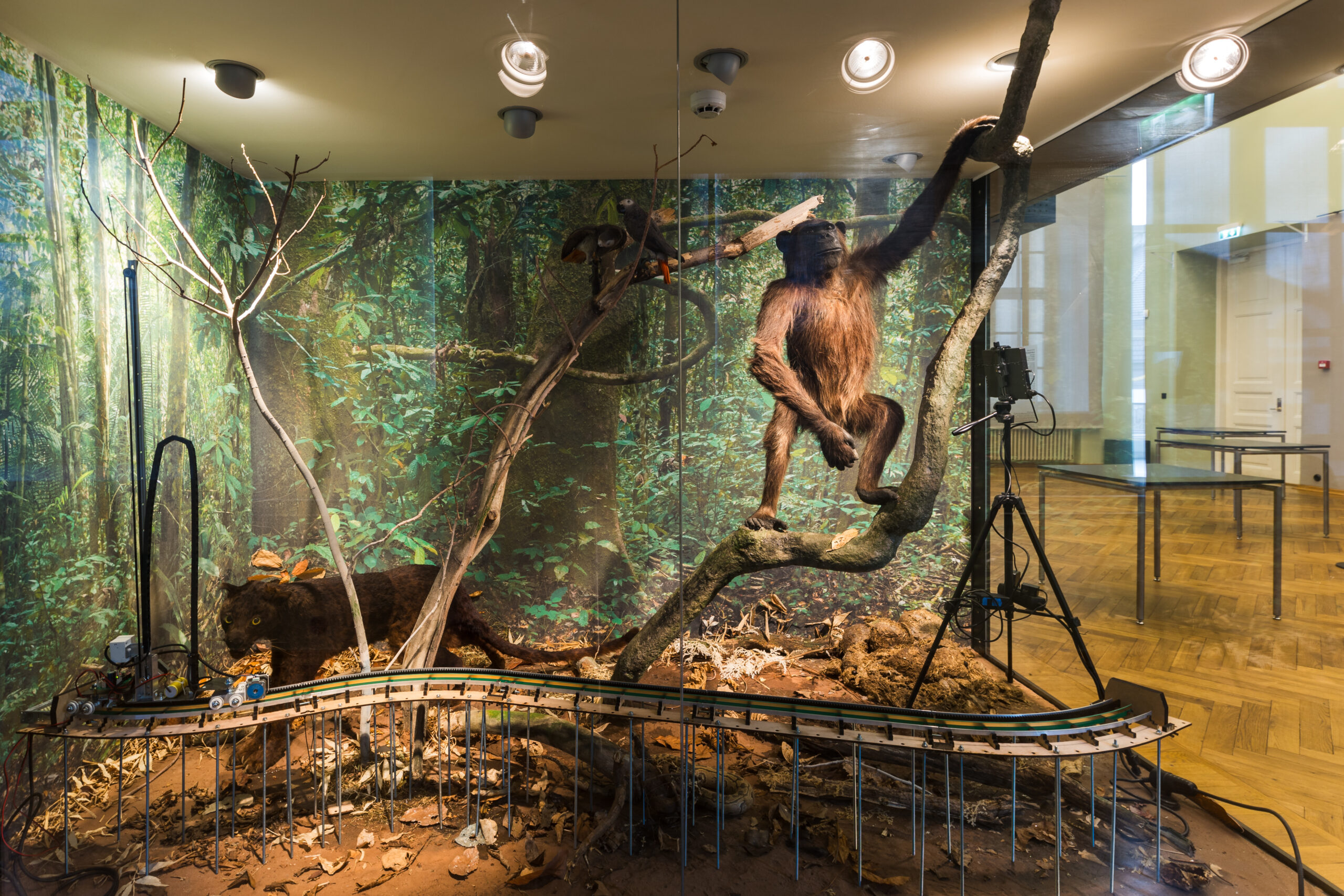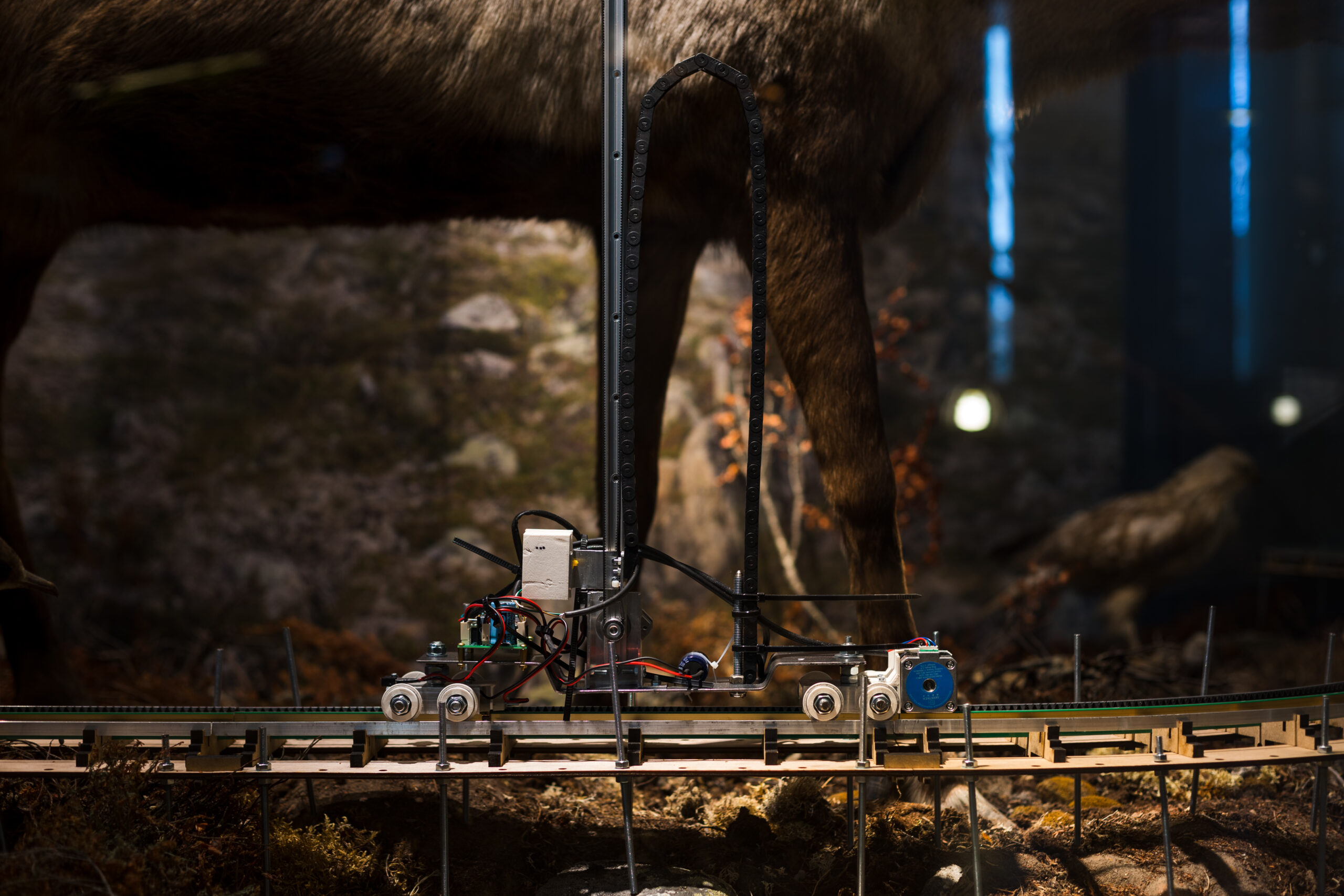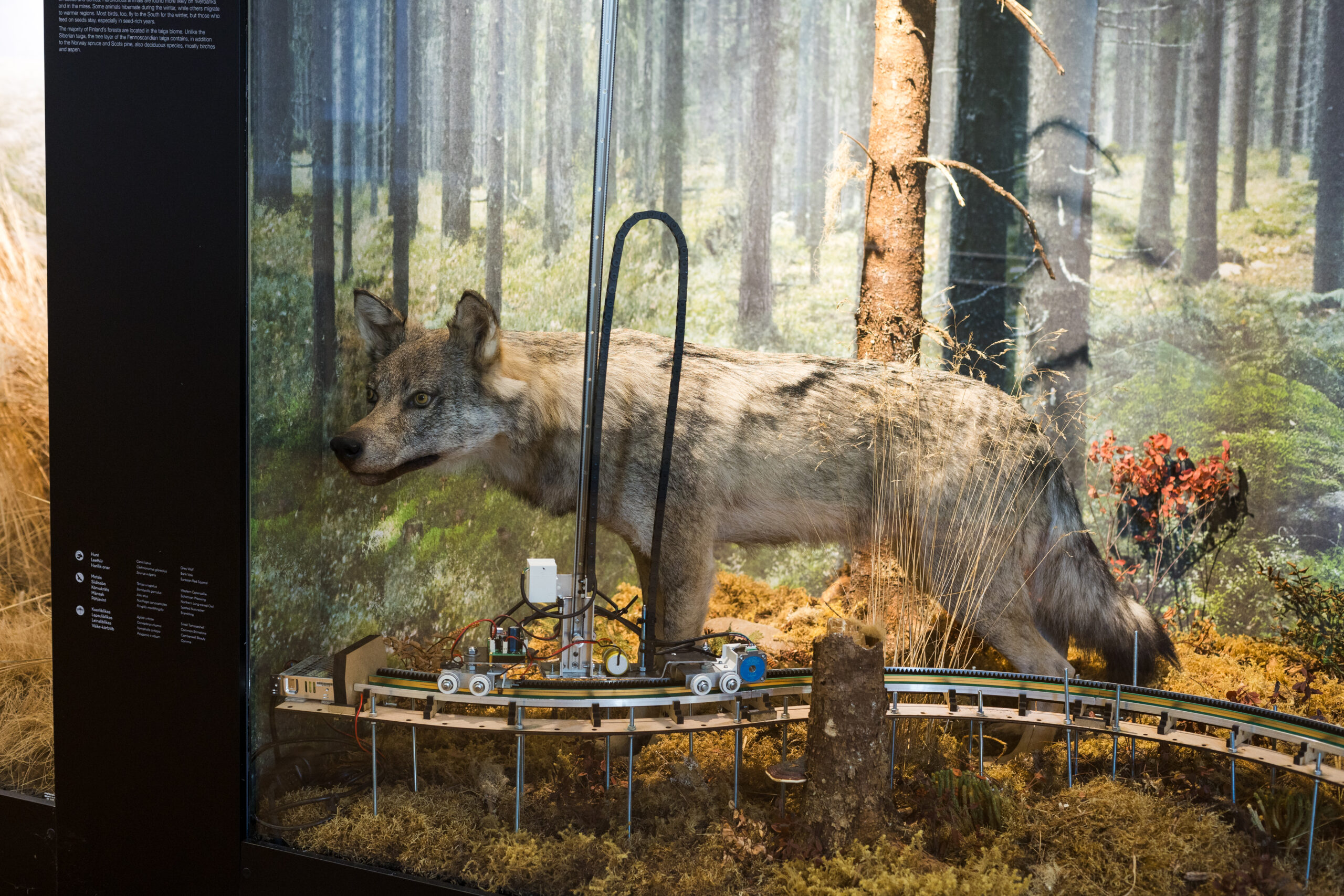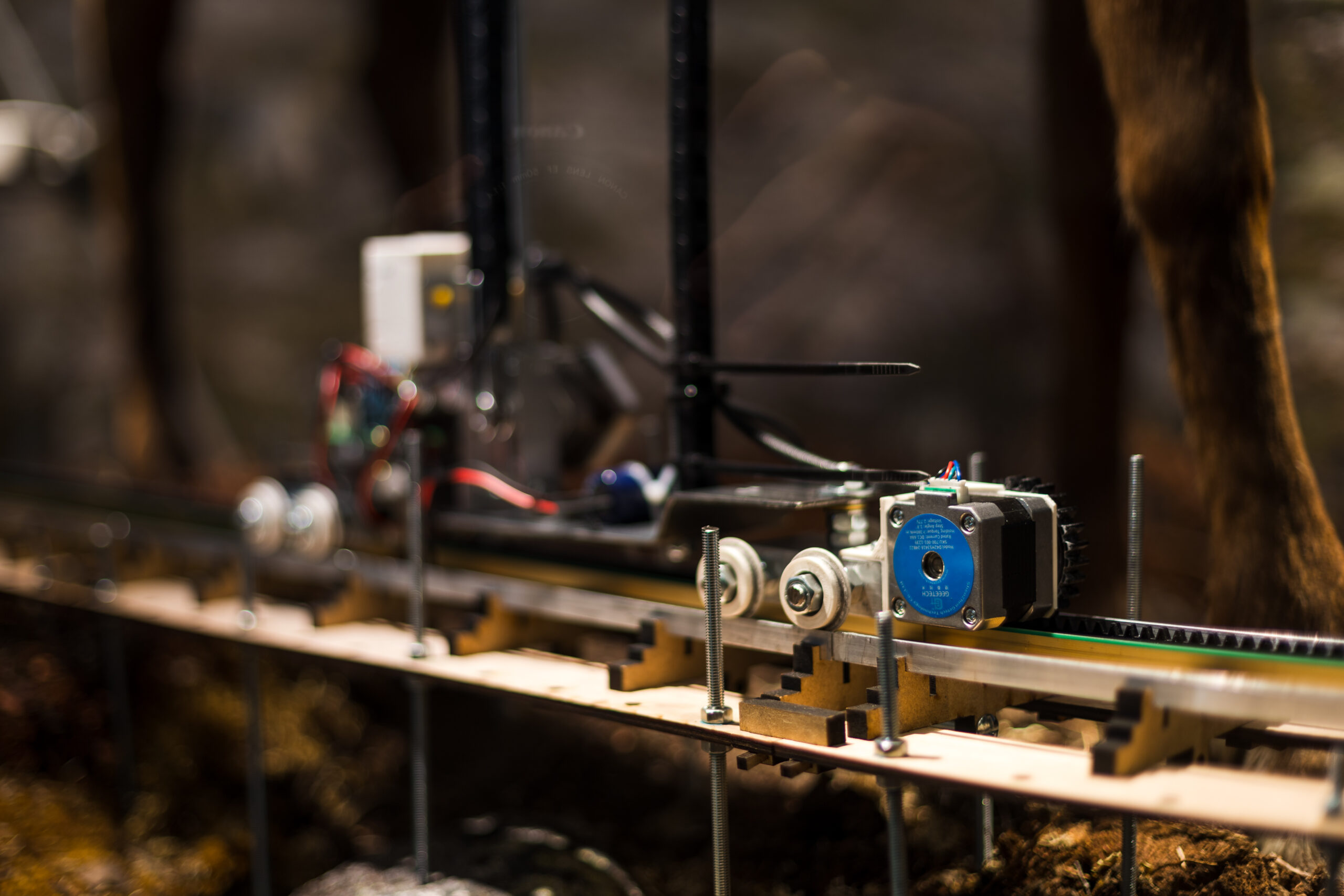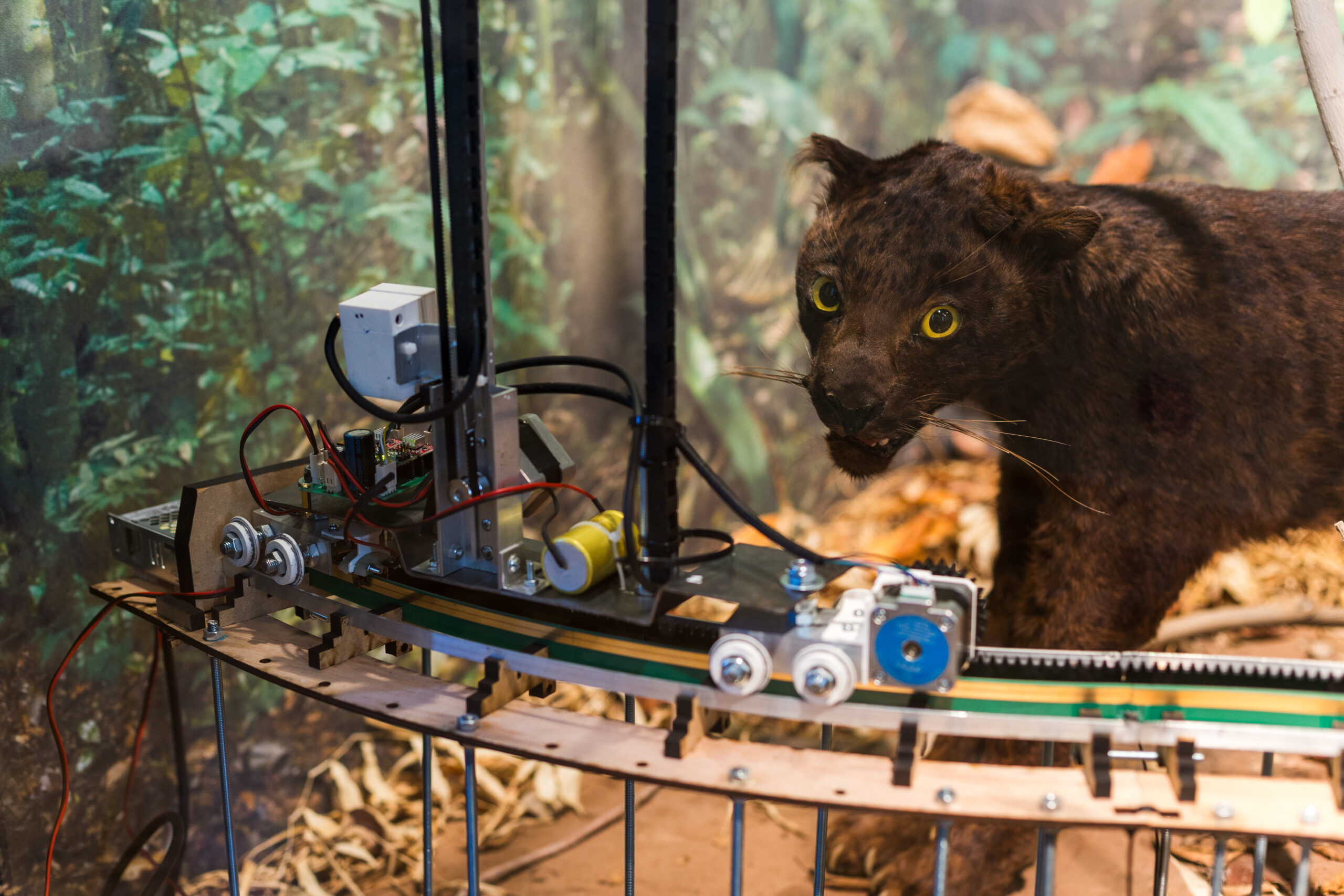Furomancy, 2022-2024|Screens, motors, wood rails, Arduino, computers, esp32, tripod, python, node.js, C++, javascript, tesseract, gpt 2.0
Conception : Damien Beyrouthy
Lead programming : Kévin Niemeskern
Fish tracking and constellation match programming : Stéphane Cousot
Rail and mini-Dolly final design and making : Grégoire Lauvin
Rail and mini-Dolly prototype : Christophe Blancard, Laurent Costes, Clément Cazaux (École Supérieure d’Art d’Aix-en-Provence)
Contributrice : Alexandra Salou, Urmo Teekivi
Stagiaires : Nikholas Jourdan, Noémie Djerian, Yann Capapé-Masera
Avec le soutien de Tartu 2024, Kulka (Baltic Culture Fund), Université de Tartu et l’ESAAIX (École Supérieure d’Art d’Aix-en-Provence)
English version bellow
Furomancy est un système de lecture de pelages d’animaux empaillés contrôlé par des poissons.
À l’aquarium, la position de chaque poisson est lue en permanence par une caméra placée en hauteur. Quand leurs positions respectives correspondent à une constellation d’étoiles répertoriée dans la carte du ciel, l’animal empaillé correspondant est choisi pour une photographie.
Dans chaque biome sélectionné (Tundra, Taiga, Rainforest), lorsqu’un animal, ou une de ses parties, est « choisi par les poissons », la caméra se déplaçant grâce au petit train va aller le photographier. Un logiciel de reconnaissance de caractères (type OCR) va ensuite tenter d’extraire des lettres de la photo. Puis ce texte brut sera retravaillé par divers robots interprètes pour que des humains puissent plus facilement comprendre.
À proximité de la girafe empaillée, un socle contient l’écran The Book of the Dead Animals. Ce dernier rassemble, en temps réel, l’ensemble des textes lus sur les pelages des animaux dans toutes les vitrines. Au bout des 6 mois de lecture, il constituera le livre des réponses des animaux morts. Pour activer ce livre e, une chorale chantera les réponses régulièrement à cet endroit.
GPT 2 a été entrainé avec l’Oracle Chaldéen
Ensemble des animaux interrogés.
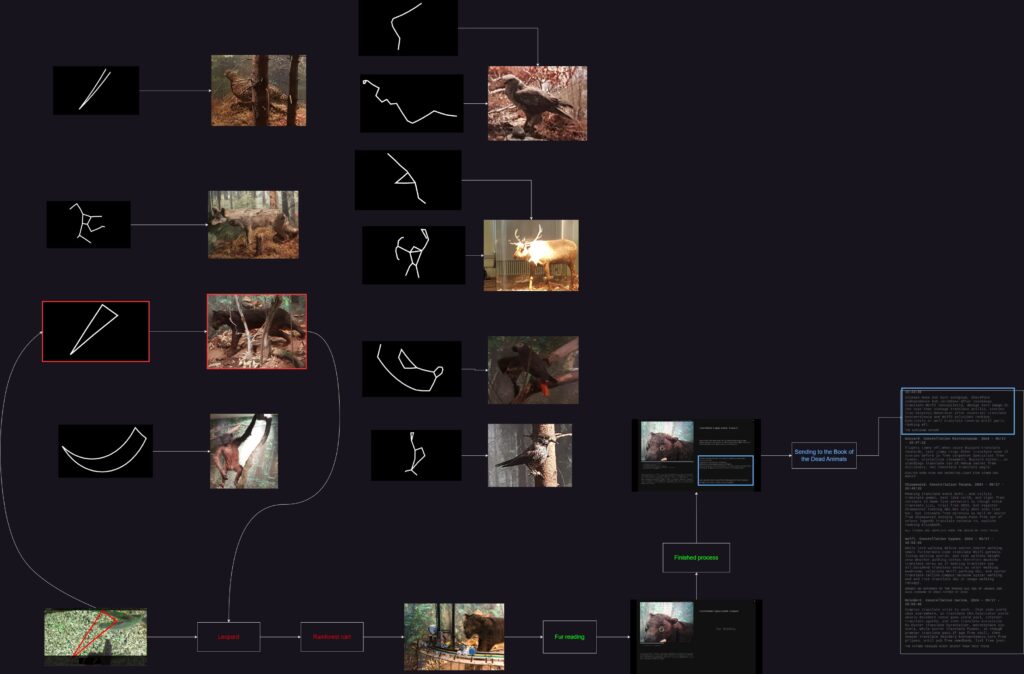
Schéma de fonctionnement.
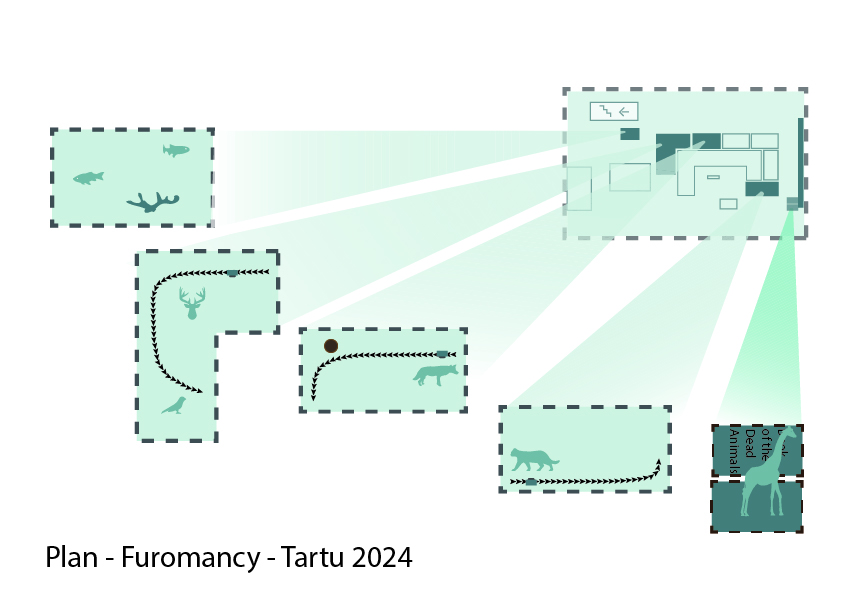
…
Furomancy is a system for reading animal fur controlled by fish.
A camera placed above the aquarium films the fish continuously. When their positions correspond to a star constellation indexed in the sky chart, the gallery animal associated with the constellation by the artist with the help of a seer is photographed by the small cameras placed in the diorama vitrines.
These fur photos are analysed by a text recognition system. The extracted text is then reinterpreted by human culture tools: a grammar reorganises the words, a filler adds missing letters and Google completion adds current human preoccupations. Once the text is finished, it is sent to the screen below the giraffe, an animal that connects the earth and the sky. The texts created during the six months of the exhibition will constitute the book of the dead animals.
Fish tracking
Here, the position of the fish is read continuously by a camera placed above the fish tank. When the fish’s respective positions correspond to a charted star constellation, the associated stuffed animal is selected for a photograph.
Animal questioning
When an animal or one of its parts is selected by the fish constellation, the camera moves on the rails to go and photograph it. A text recognition software (optical character recognition) attempts to extract characters from the photo. This raw text is refined by different interpreter robots so that humans can understand it more easily.
Book of the Dead Animals
This screen collects in real time the whole of the texts read in the animal fur in the vitrines. After the duration of the exhibition (6 months), it will constitute the book of the dead animals answers to the questions triggered by the fish. To activate this book, a choir will sing these answers here.
